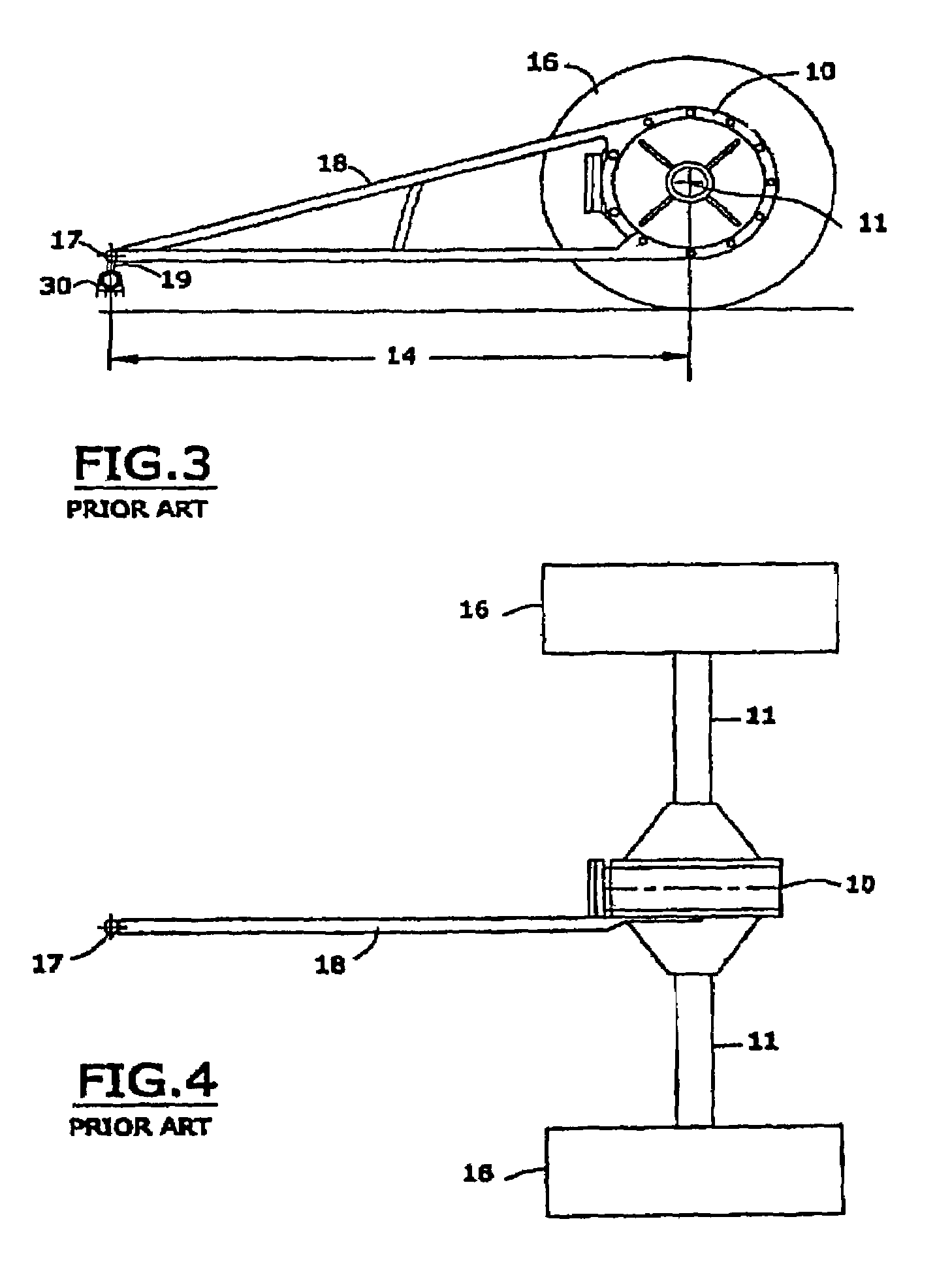Torque reaction control link
a torque arm and control link technology, applied in resilient suspensions, interconnection systems, vehicle components, etc., can solve the problems of difficult control of bump and roll steer of the axle as desired, limited design, and limited torque arm length of the side view swing arm (svsa), so as to minimize the conversion of sprung weight and minimize the change of pinion angle
- Summary
- Abstract
- Description
- Claims
- Application Information
AI Technical Summary
Benefits of technology
Problems solved by technology
Method used
Image
Examples
Embodiment Construction
[0029]This application claims priority of U.S. Provisional Patent Application 60 / 491,503, filed on Jul. 31, 2003, titled: Torque Reaction Control Link.
[0030]At the outset, it should be clearly understood that like reference numerals are intended to identify the same structural elements, portions, or surfaces consistently throughout the several drawing figures, as may be further described or explained by the entire written specification of which this detailed description is an integral part. These embodiments should not be construed as the only applications that the inventions may be used.
[0031]A significant deficiency with the previously developed suspension systems such as those depicted in FIGS. 1-4, as well as many other similar devices, is that they provide a vehicle suspension system that limits the ability of the vehicle drive axle tires to maintain traction when accelerating over irregular terrain and / or puts the drive axle reaction forces on the spring strut or shock absorbe...
PUM
 Login to View More
Login to View More Abstract
Description
Claims
Application Information
 Login to View More
Login to View More - R&D
- Intellectual Property
- Life Sciences
- Materials
- Tech Scout
- Unparalleled Data Quality
- Higher Quality Content
- 60% Fewer Hallucinations
Browse by: Latest US Patents, China's latest patents, Technical Efficacy Thesaurus, Application Domain, Technology Topic, Popular Technical Reports.
© 2025 PatSnap. All rights reserved.Legal|Privacy policy|Modern Slavery Act Transparency Statement|Sitemap|About US| Contact US: help@patsnap.com



